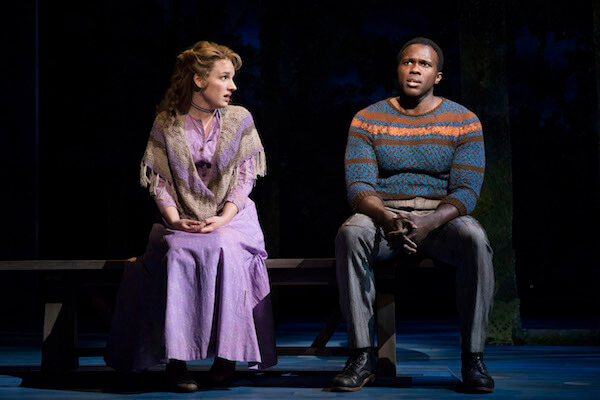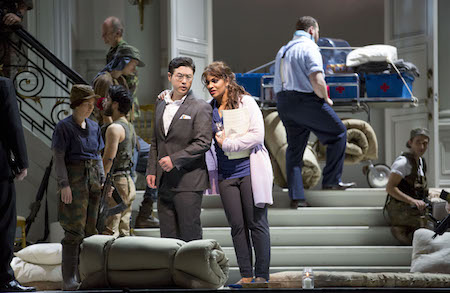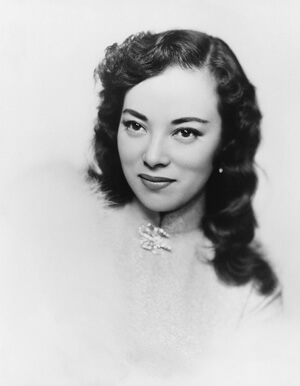William M. Hoffman, 1939-2017.
William M. Hoffman, who died at age 78 on April 29, was an important and beloved figure in at least three communities: artistic, gay, and Jewish. In each, he left an indelible mark.
A pioneer of the precious gems of gay street theater that came together in an anthology he edited, “Gay Plays,” Hoffman, a native New Yorker, was a leading light of Greenwich Village’s legendary Caffe Cino.
As a playwright, he is best known as the author of “As Is.” In 1985, it became the first Broadway play about AIDS, following Robert Chesley’s Off-Off-Broadway “Stray Dog Story” and preceding the premiere of Larry Kramer’s “The Normal Heart.” “As Is” was a hit and is widely credited, together with “The Normal Heart,” for creating greater public awareness of AIDS and its impact on our lives and times.
Following its run on Broadway, “As Is” became a film starring Colleen Dewhurst as the AIDS hospice worker. My eyes still swell with tears when I recall the coup de théâtre that concludes the play. Despite harsh condemnation of homosexuality by the Catholic Church, here was a nun whose compassion for humanity leads her to share the most deeply personal ritual of her charge, a gay man dying of AIDS. Reflecting on their last exchange, she lifts up her hands to reveal her nails, painted red. It was one of those moments that would mark William M. Hoffman as a master of theater, art, and the human heart.
Caffe Cino pioneer, playwright of Broadway’ first AIDS story, librettist was 78
Perhaps the pinnacle of Hoffman’s achievement was “The Ghosts of Versailles,” the opera he co-created with his lifelong friend and collaborator composer John Corigliano. One of the most prestigious events in American operatic history, this very grand opera was a world premiere commission by the Metropolitan Opera to mark the 100th anniversary of the company.
Still early in her career, Renée Fleming, now retiring from the opera stage, played the co-starring role of Countess Almaviva. The opera recaps, comments on, and develops the stories of some of opera’s most famous and beloved characters — that jack of all arts and trades (and hearts) Figaro and those paragons (and parodies) of nobility, the Almavivas. They are the protagonists of two of opera history’s most famous and beloved works, Mozart’s “Marriage of Figaro” and Rossini’s “Barber of Seville.” “Ghosts” is also the story of their creator, Beaumarchais, and the fabled Marie Antoinette, the ghost of whom Beaumarchais’ ghost is in love with. The at-once historical and magical tale is deftly constructed around Beaumarchais’ lesser-known sequel to these plays, “La Mere Coupable,” which takes place in the throes of the French Revolution that the earlier plays take place on the cusp of.
So long as there will be opera, it’s a certainty that “Ghosts of Versailles” will find an enduring place for itself alongside “The Barber of Seville” and “The Marriage of Figaro.” Though it hasn’t happened as such yet, it’s an ideal triology project for future directors and opera companies. A “Figaro” cycle, like the “Ring” cycle.
In a life of contributions as rich and varied as Bill’s, this remembrance will perforce omit much. But mention should also be made here of the work he did on restoring the reputation and place of the librettist as co-creator. Hoffman felt that just as Da Ponte is recognized and celebrated as the co-creator of Mozart’s operas, so should his own contribution be fully recognized, a co-equality likewise championed by composer Corigliano. It was an uphill battle he was never to win, at least not in our own times and in more traditional operatic venues.
Bill went on to write and revise other plays, many of them with gay themes, one of which, “Cornbury,” was an adaptation of an earlier play about the mythic first governor of New York who was known to have cross-dressed. Panoramically, Bill recreated the early New York of the Dutch, Queen Anne, and the Indian wars. The political insights are as endless as the humor. At various points, he hoped to make the play into a musical, which tweaked the interest of Hal Prince. It’s hard to imagine another story that could so sweepingly recreate the early history of New York.
There were many other projects, greater and lesser, that Bill worked on, most recently, “Morning Star,” a musical-dramatic co-creation with Ricky Ian Gordon of the infamous 1911 Triangle Shirtwaist Factory fire in New York, in which so many garment workers, most of them young Jewish and Italian immigrant women, perished. The story revolves around a Latvian Jewish family. “Morning Star” was a co-production of the Chicago Lyric Opera and the Goodman Theatre and had its world premiere in Cincinnati in 2015.
In the interstices of this work is another issue that hugely preoccupied Bill and which colors everything he ever wrote: his Jewishness. In the many revisions and stagings of his play “Riga” (his parents were Latvian Jews who escaped the Holocaust, in which most of their relatives were murdered), he was deeply concerned about anti-Semitism, past, present, and future. In the midst of his work on these plays, he established an informal network of artists and writers concerned about anti-Semitism, among whose regulars were soprano Regina Resnick, writer and feminist Phyllis Chesler, my partner Arnie Kantrowitz, and me.
Like many artists, Bill left much undone. But just as there aren’t yet words to say how much he touched our lives, there aren’t yet measures to assess his impact. Because so much of what he had to show and tell us foretold of the future as it recreated the past, it’s certain that the story of William M. Hoffman, like few other artists of our communities and times, awaits a sequel, a “Ghosts” of his life and times.
In his later years, he relocated from Soho to Beacon, New York, an hour or so up the Hudson River from Lehman College, where he headed the theater department and directed many original plays and productions for his students who loved him. There, he lived and worked with his husband, Russ Taylor. My last visit with them was in January. Bill had been suffering from increasingly serious and frequent illnesses, many of them stemming from severe arthritis.
His role as perhaps my closest friend for more than a quarter century is inestimable.
May he rest in peace. But may his ghost haunt us forever.




































